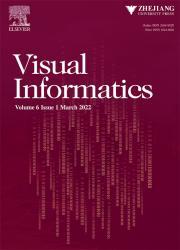VirtuNarrator: Crafting museum narratives via spatial layout in creating customized virtual museums
IF 3.8
3区 计算机科学
Q2 COMPUTER SCIENCE, INFORMATION SYSTEMS
引用次数: 0
Abstract
Curation in museums involves not only presenting exhibits for visitors but also deeply shaping a systematic narrative experience through deliberate spatial layout design of the museum space. In contrast, the dynamic nature of virtual reality (VR) environments establishes virtual museums as a more potent space for both layout optimization and narrative construction, particularly when integrating visitors’ diverse preferences to optimize the virtual museum and convey narratives. Therefore, we first collaborated with experienced curators to conduct a formative study to understand the workflow of curation and summarize the museum narratives that weave exhibits, galleries, and museum architecture into a compelling story. We then proposed a museum spatial layout framework that clarified three narrative levels (exhibit level, gallery level, and architecture level) to support the controllable spatial layout of the museum’s elements. Based on that, we developed VirtuNarrator, a proof-of-concept prototype designed to assist visitors in choosing different narrative themes, filtering exhibits, creating and adjusting galleries, and freely connecting them. The evaluation results validated that visitors received a more systematic museum narrative experience and perceptions of multi-perspective narrative design in VirtuNarrator. We also provided insights into VR-based museum narrative enhancement beyond spatial layout design.
virtunarator:通过空间布局打造定制的虚拟博物馆
博物馆策展不仅仅是向参观者展示展品,还需要通过精心设计博物馆空间布局,深刻塑造一种系统的叙事体验。相比之下,虚拟现实(VR)环境的动态性使虚拟博物馆成为一个更有效的空间,无论是布局优化还是叙事构建,特别是在整合游客的多样化偏好来优化虚拟博物馆和传达叙事时。因此,我们首先与经验丰富的策展人合作,进行了一项形成性研究,以了解策展的工作流程,并总结了将展品、画廊和博物馆建筑编织成一个引人入胜的故事的博物馆叙事。然后,我们提出了一个博物馆空间布局框架,明确了三个叙事层面(展览层面、画廊层面和建筑层面),以支持博物馆元素的可控空间布局。基于此,我们开发了virtunarator,这是一个概念验证原型,旨在帮助参观者选择不同的叙事主题,过滤展品,创建和调整画廊,并自由连接它们。评价结果验证了参观者获得了更系统的博物馆叙事体验和virtunarator中多角度叙事设计的感知。我们还提供了超越空间布局设计的基于vr的博物馆叙事增强的见解。
本文章由计算机程序翻译,如有差异,请以英文原文为准。
求助全文
约1分钟内获得全文
求助全文
来源期刊

Visual Informatics
Computer Science-Computer Graphics and Computer-Aided Design
CiteScore
6.70
自引率
3.30%
发文量
33
审稿时长
79 days
 求助内容:
求助内容: 应助结果提醒方式:
应助结果提醒方式:


